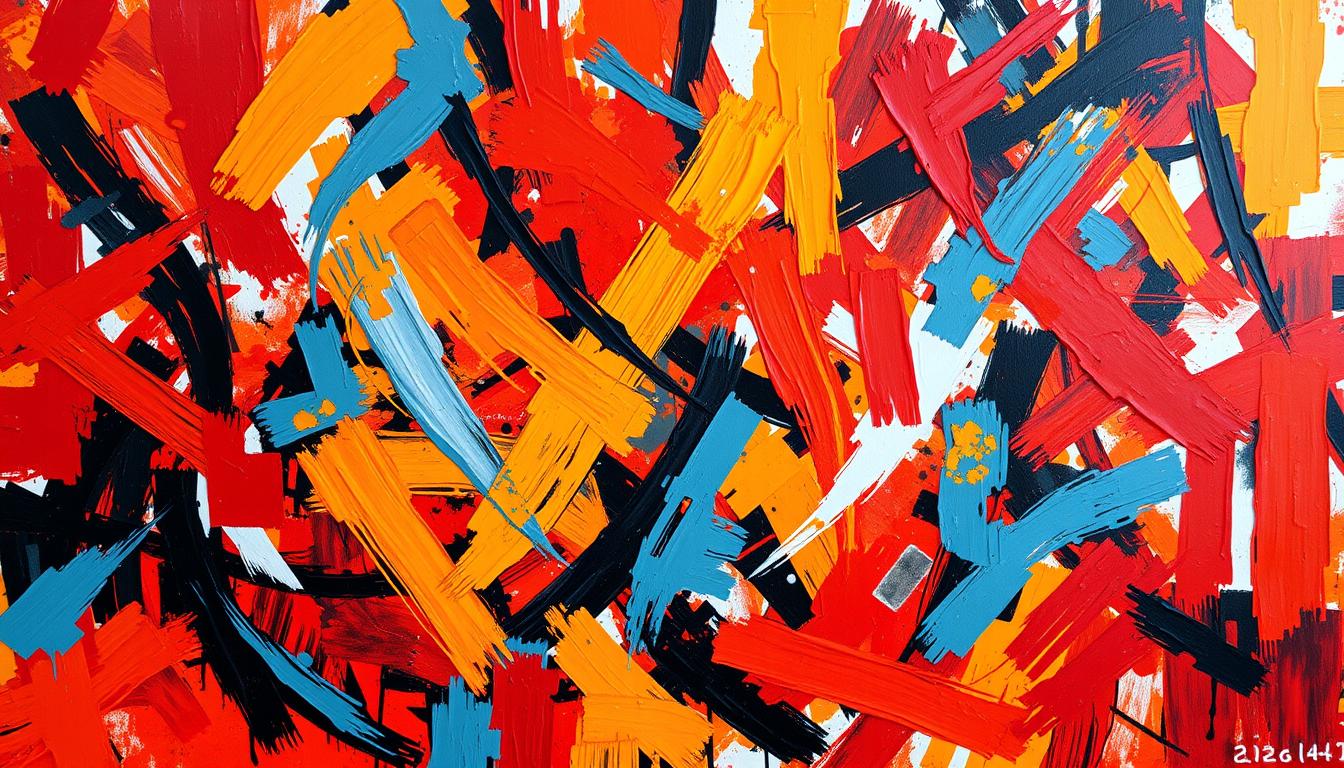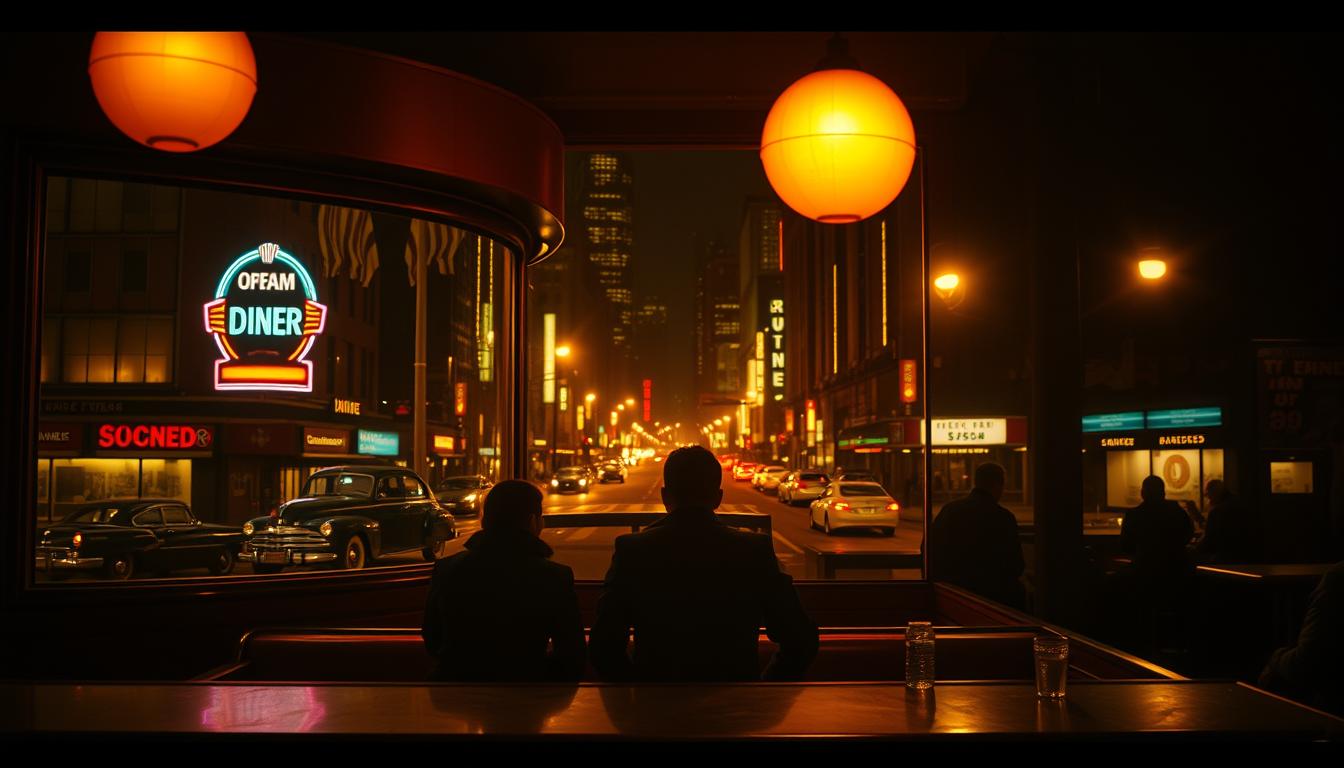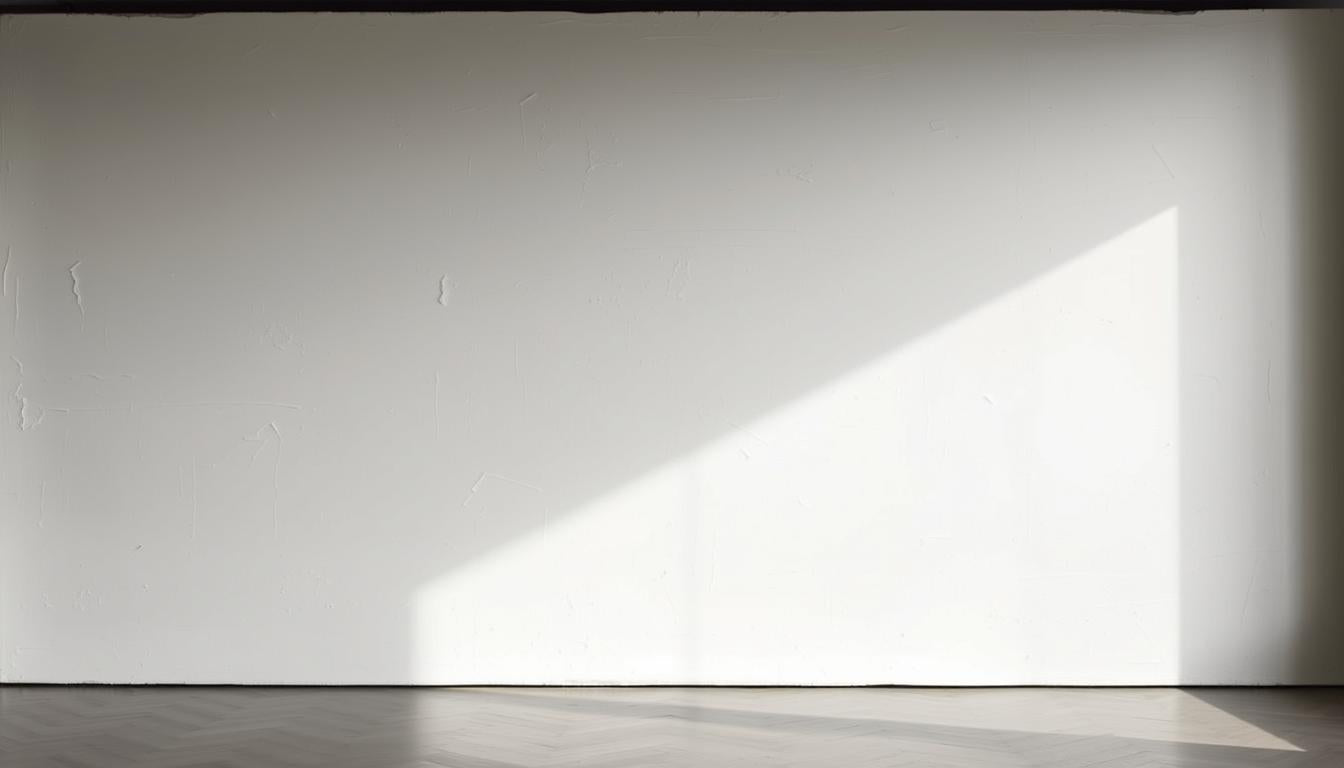Can a painting feel like a pulse in your chest? That question leads us into a creative movement that puts inner feeling before exact depiction. This introduction explains how expressionism rose as a modern response to a changing world and why its language of color, distortion, and bold brushwork still matters.
Artists turned to intense tones and warped forms to share private views of life. Early figures such as Edvard Munch and James Ensor helped shape a trend that would spread across painting, printmaking, film, literature, and music.
The guide ahead will trace origin stories, key group dynamics, signature techniques, and the lasting impact on how viewers read subjective reality. You’ll see how artists used the movement to challenge norms and to make social critique feel personal and urgent.

Key Takeaways
- Expressionism centers emotion over exact depiction to convey subjective reality.
- It began in the late 19th and early 20th century with artists seeking new responses to change.
- The movement influenced many media and shaped modernist ideas across decades.
- Group action amplified individual voices and spread techniques globally.
- Readers will gain clear, practical insight into its themes, methods, and cultural impact.
Defining Expressionism today: emotion first, reality second
Expressionist practice puts feeling above faithful depiction, using bold colors and distorted forms to map inner states. This approach pushes lines and palettes to extremes so a painting communicates mood more than mirror-like detail.
Artists favor energetic brushwork, warped composition, and abrupt contrasts as practical techniques. Those moves make emotions legible: grief, joy, anxiety, or defiance become visible without literal storytelling.
The visible world is intentionally filtered. The goal is an inner truth that often reads truer than strict realism. That flexibility means the style adapts easily to new subjects and to cultural debates about identity and memory.
Why it still matters: in a fast, image-rich society, this expressive toolkit helps makers turn private life into shared meaning. Readers can explore a clear primer at modern expressionist overview to see how these choices developed and why they remain in studio practice.
From fin de siècle to the avant‑garde: how Expressionism emerged and evolved
Late 19th‑century experiments with color and feeling moved artists toward a more urgent, personal modernism. Early figures such as Edvard Munch and James Ensor stretched tones and distorted forms to show anxiety, grief, and spiritual search.
Preludes: Munch and Ensor
Munch’s brooding palette and Ensor’s grotesque masks made emotion visible. Their work made the leap from private feeling to public challenge.
Founding groups and ideas
The 1905 formation of die brücke and the later circle around der blaue brought painters together as a united force. These groups staged exhibitions and wrote claims that amplified their ideas.
War, media, and spread
World War I intensified themes of trauma and alienation. Painters and printmakers turned to woodcut and bold carving, finding the tactile gestures matched emotional urgency.
Cross‑media reach
Writers, filmmakers, and composers exchanged methods with painters, so the style broadened across literature, film, music, and printmaking. This cross‑pollination made the movement a lasting presence in 20th century culture.
For an accessible survey of related early modern movements, see this overview.
What is Expressionism in contemporary art?
Today’s makers face a world where every moment can be filmed, shared, and reshaped instantly. That flood of images changes how painting and other media claim truth. Contemporary expressionism works as an active response to a camera‑saturated life.
Artists use distortion and heightened color to probe reality rather than simply copy it. This makes inner life legible amid fast feeds and viral frames.
Continuities of feeling: anxiety, alienation, and spiritual inquiry remain central themes. These concerns bridge the early 20th century and the present, so viewers find the work urgent and familiar.
In crisis—war, displacement, discrimination—expressionist methods help society process emotion. They translate trauma into a visual language that invites empathy and critique.
Today’s expressionists work alone and in networks. Their practice adapts across screens and canvas, keeping emotional force alive for a global audience.
| Feature | Early 20th Century | Present Day |
|---|---|---|
| Primary aim | Inner emotion over realism | Probe feeling within image overload |
| Media | Paint, print, film | Canvas, video, digital, installation |
| Social role | Critique of modernity | Address crises, empathy, and memory |
| Community | Studio groups and salons | Online networks and collectives |
Meet the Expressionists: artists, groups, and landmark works
Meet the makers whose bold choices of color, line, and subject reshaped how feeling reads on canvas.
Ernst Ludwig Kirchner and Die Brücke: from street scenes to Swiss refuge
Ernst Ludwig Kirchner led die brücke from tense Berlin street scenes to quieter Swiss landscapes after the war. His Winter Moonlit Night (1919) shows the shift to healing subject matter and the revived interest in woodcut printmaking.
Der Blaue Reiter: spiritual abstraction and key figures
Der Blaue and the Blue Rider circle promoted spiritual paths through abstract color. Wassily Kandinsky and Franz Marc used nonrepresentational forms to suggest inner truth rather than literal sight.
Other pivotal painters and landmark works
Early signposts include Edvard Munch and The Scream, while Egon Schiele, Oskar Kokoschka, and Emil Nolde pushed psychological intensity and vivid colors across canvas and paper.
- Group structures gave visibility but let each painter keep a distinct voice.
- Exaggerated lines, saturated colors, and warped forms made feeling immediate.
- These works traveled across Europe and the United States, shaping later generations of artists.
Techniques that move viewers: color, form, and energetic mark‑making
Mark-making and color choices act like a language, asking viewers to feel before they read.
Vibrant colors and exaggerated lines
Vibrant colors and high‑contrast palettes steer emotion instantly. Shocked complements or a narrow, heated palette guide the eye and fix mood.
Exaggerated lines carve character into faces and spaces. These distortions turn ordinary forms into charged signs of tension or loss.
Distortion, primitivism, and printmaking’s physicality
Many artists drew on primitivism for directness and simplicity. Today we note that choice with ethical care and context.
Woodcut and other print methods add physical urgency. Cutting, gouging, and heavy inking create raw edges that read as forceful gestures.
- Brushwork: pressured marks, rapid strokes, rough transitions.
- Composition: compressed space, skewed perspective, asymmetry.
- Material choices: limited palette or shocking contrast to focus attention.
| Technique | Effect | Typical media |
|---|---|---|
| Vibrant palettes | Immediate emotional tone | Painting, canvas, prints |
| Exaggerated lines | Subjective form, visible tension | Painting, drawing, print |
| Woodcut/print | Physical urgency and repeatable critique | Printmaking, editions |
Themes that resonate: trauma, social critique, and the human condition
Trauma and moral outrage have long steered artists toward images that refuse easy comfort.
Early expressionists recorded pre‑war anxiety that deepened into post‑war trauma after world war I. Painters kept the human condition at the center, turning despair and alienation into urgent subjects.
Social critique became a primary purpose. Works condemned cruelty, discrimination, and dehumanization. They asked viewers to respond rather than look away.

War, cruelty, and the “Other”: art as dialogue and social change
Artists made confrontational portraits and symbolic landscapes to summon empathy. Compression, distortion, and fragmentation function as content, not just style.
"Art should force you to feel what society prefers to hide."
From utopia to Neue Sachlichkeit: clarity after shock
After shock, some turned to cooler clarity. Neue Sachlichkeit favored sober form and direct subjects as a way to rebuild public vision.
- From claustrophobic interiors to stark realism, narrative choices shifted toward fact and civic scrutiny.
- Forms—pressure, fracture, intense mark‑making—kept moral urgency visible.
- These themes persist today as artists adapt to new media and political realities.
In short: the movement keeps difficult conversations visible, using visual force to document life and to push for social change.
Global currents and regional threads shaping Expressionist art
Regional networks across Eastern Europe braided local history with bold formal risk, producing unique responses to the upheavals of the early 20th century and to our present time.
Poland and Ukraine: Formists, Witkacy, and contemporary voices
The Polish scene spawned three independent groups around 1917–1918: the Formists in Kraków, Bunt in Poznań, and Jung Idysz in Łódź. These circles mixed cubist and futurist energy with expressive color and local folklore.
Witkacy (Stanisław Ignacy Witkiewicz) shaped Formism by merging ideas and organizing salons that rallied artists and debate.
Belarus and the École de Paris: Chagall, Soutine, and Roman Semashkevich
Belarus contributed fewer internal groups but sent key figures to Paris. Marc Chagall and Chaïm Soutine helped reshape modern tastes, while Roman Semashkevich’s fate in 1937 reminds us how politics shaped works and lives.
Contemporary names to know
Today Kateryna Lysovenko and Sana Shahmuradova Tanska extend these threads, visualizing private and collective trauma. Other voices—Margarita Dyushko, Irina Kotova, Roman Kaminski, Anastasia Rydlevskaya—show how styles travel across the world.
Connection to earlier groups: echoes of die brücke and der blaue remain visible as makers borrow energy, moral urgency, and expressive technique to speak across the century.
Expressionism’s impact on modern art and the United States
When New York institutions displayed bold German work, a new visual vocabulary arrived for U.S. makers.
From early modernism to MoMA’s 1931 exhibition
The Museum of Modern Art’s 1931 show brought German painting and sculpture to American audiences. That exhibition helped museums and critics read intense color, jagged brushwork, and emotional scale as serious modern art.
Edvard Munch and other European names began to appear in American discussions, even as political pressure in Europe soon forced many artists into exile or erased their presence at home.
How expressive styles inform American modern art today
U.S. artists absorbed subjectivity, distortion, and raw gesture into new work that tackled society and historical crises.
Brushwork, palette, and composition shifted: aggressive strokes, saturated contrasts, and compressed space moved from imported models into local studios.
The Blue Rider legacy—its spiritual abstraction—fed American lines exploring inner states and metaphysics. That lineage runs from mid‑century painters to photographers and filmmakers who adopted expressionist tactics.
- Cross‑media reach: painting’s language shaped printmaking, film, performance, and sound work across the 20th century and beyond.
- Resilience: the movement’s lessons persisted despite Nazi persecution and helped U.S. artists respond to world war and later social upheavals.
- Ongoing impact: museums still frame exhibitions to show how expressive distortion deepens public engagement with difficult subjects.

For further context on the broader movement and its origins, see a clear overview at this survey.
Conclusion
,Across canvas and print, bold palettes and raw marks keep emotion center stage. This movement turns colors, forms, and process into a visual language viewers feel at once.
Die Brücke and Der Blaue left durable lessons on how works on canvas and paper fuse ideas with craft. Names such as Edvard Munch, Ernst Ludwig Kirchner, Wassily Kandinsky, and Franz Marc still shape how painters and printmakers work today.
Look closely at brushwork, composition, and color to see how meaning forms. The legacy goes beyond style: it asks audiences to face trauma, social critique, and spiritual search with clarity and care.
Keep engaging with past and present expressionist artists — studying these works sharpens how we read images in a fast world.
Enhance Your Space with Unique Modern Masterpieces
Are you inspired by the innovative mediums and conceptual depth highlighted in our exploration of contemporary art? You’re not alone! Today’s art enthusiasts are seeking cultural relevance and emotional connections in their artwork. However, finding pieces that resonate with modern themes and fit your unique style can be a challenge. That’s where we come in!
At Rossetti Art, we specialize in canvas prints, original paintings, and modern sculptures that celebrate the spirit of now. Each piece created by Chiara Rossetti brings a personal touch that connects deeply with current social narratives—just like the modern masterpieces discussed in the article. Don’t miss out on the chance to elevate your home decor with breathtaking artwork that speaks to your values and aesthetic. Explore our collection today and find your perfect piece! Act now, and transform your space into a gallery of inspiration!
FAQ
What defines Expressionism today?
Expressionism today prioritizes feeling over faithful depiction. Artists use bold color, distorted forms, and aggressive brushwork to convey inner states—anxiety, longing, protest—rather than optical reality. Contemporary practitioners adapt those tools for painting, print, film, and digital media to respond to urgent personal and social concerns.
How did the movement begin and who influenced it?
Late 19th‑century figures such as Edvard Munch and James Ensor laid early groundwork with emotive subjects and simplified forms. In Germany, groups like Die Brücke and Der Blaue Reiter organized around expressive color, spiritual inquiry, and a rejection of academic norms. That mix of personal vision and collective experiment shaped the early avant‑garde.
What role did World War I play in its evolution?
The war intensified Expressionist themes. Trauma, alienation, and political critique grew sharper as artists responded to mass violence and social upheaval. Some sought catharsis through raw imagery; others moved toward a cooler, critical realism in the 1920s, as seen in Neue Sachlichkeit.
Which media did Expressionists use beyond painting?
The movement moved across printmaking, theater, film, literature, and music. Woodcuts and lithographs amplified stark contrasts; theater embraced angular sets; film adopted chiaroscuro and distorted perspectives. This cross‑disciplinary reach helped spread its aesthetics worldwide.
How does Expressionism remain relevant in a camera‑saturated age?
Artists use expressive strategies to counter photographic realism and social media’s polished surfaces. They amplify emotion, challenge narratives, and document inner life amid information overload. The result often reads as raw testimony rather than neutral reportage.
Which core feelings and themes persist today?
Anxiety, alienation, spiritual seeking, and social critique continue to drive makers. Themes such as trauma, migration, identity, and ecological crisis show up across contemporary work, keeping expressive modes potent for public conversation.
Who are key historical figures and their landmark works?
Important names include Ernst Ludwig Kirchner and Die Brücke for street scenes and bold color; Wassily Kandinsky and Franz Marc from Der Blaue Reiter for spiritual abstraction; plus Edvard Munch, Egon Schiele, Oskar Kokoschka, and Emil Nolde for visceral form and line. Iconic works—like Munch’s The Scream—crystallize the movement’s aims.
What techniques make viewers feel moved?
Vibrant, nonnatural color, exaggerated outlines, and aggressive mark‑making create immediacy. Distortion of proportion and perspective forces emotional reading. Printmaking’s rough textures and woodcut starkness enhance raw expression.
How did regional currents shape diverse Expressionist forms?
Local histories and politics produced varied strands: Polish and Ukrainian Formists combined folk motifs with modernist rage; Belarusian émigrés and École de Paris figures brought lyrical tension; contemporary Eastern European artists weave those legacies into present debates about identity and memory.
Which contemporary artists carry the tradition forward?
Recent names include Kateryna Lysovenko, Sana Shahmuradova Tanska, Margarita Dyushko, Irina Kotova, Roman Kaminski, and Anastasia Rydlevskaya. They blend historical techniques with current concerns—migration, conflict, gender—and keep expressive language alive.
What impact did Expressionism have on modern art in the United States?
European expressionist ideas fueled American modernism through émigré artists, curatorial exposure, and exhibitions such as MoMA’s early shows. The movement’s focus on subjectivity influenced Abstract Expressionism and later figurative practices in the U.S.
How did Ernst Ludwig Kirchner and Die Brücke evolve over time?
Kirchner’s early work captured Berlin street life with jagged energy. After WWI and health struggles, he relocated to Switzerland, where his palette and forms shifted but his urgency remained. Die Brücke members pursued collective experimentation before dispersing under political and personal pressures.
Where can newcomers see representative works?
Major museums—MoMA, the National Gallery, the Neue Galerie, and the Berlinische Galerie—hold key canvases and prints. Regional collections and biennials also feature contemporary takes that trace lines back to early Expressionist practice.






Leave a comment
This site is protected by hCaptcha and the hCaptcha Privacy Policy and Terms of Service apply.